Concorde Square .
Concorde Square .
Concorde Square . It is a historic square located in the 8th district of Paris, at the beginning of the Avenue des Champs-Élysées. It's a historic square at the beginning of the Rue de la Chançalise. It is the second largest square after the Place des Quinconces in Bordeaux, France. The octagonal square is 84,000 m2 in size. It's about 10,000 square feet.
Where is Concorde Square?
Where is Concorde Square? The Place de la Concorde is located in the very center of the 8th district of Paris, the capital of France, at the eastern end of the Avenue des Champs-Élysées. It is located in the very center of the district, at the eastern end of the Avenue de la Champagne. This location brings the square close to important attractions and historical buildings of the city.
Plans to travel to Paris and ... What to Do in Paris He can review our trip plans, Places to visit in Paris You can create your own itinerary from our page.
How to Get to Concorde Square
How do you get to Concorde Square? Since the Place de la Concorde in France is located close to the center of Paris, transportation options are quite varied and can be easily accessed from different parts of the city. He can choose the most convenient transportation option according to everyone's preferences and location.
- The subway: The extensive metro network in Paris is an excellent option to reach Place de la Concorde. Concorde Square has a subway station under Line 1. It has a metro station under the line (Line 1). The "Concorde" station is just below the Avenue des Champs-Élysées and you can easily walk to the square. In addition, Madeleine station on line 8 (Line 8) offers a nearby alternative. Even the Madeleine station (line 8) offers a nearby alternative.
- The bus: In Paris, many bus lines serve Concorde Square. You can reach the square by taking a convenient line from bus stops that are commonly found throughout the city. For information on bus lines and routes, you can consult the Paris public transport system.
- The taxi: Taxi service is quite common in Paris. You can easily reach Concorde Square by taxi by going to one of the taxi stops in the city or using taxi applications.
- The walk: Many tourist attractions in the central areas of Paris can be explored on foot. Especially walking to the Place de la Concorde at the end of the Avenue des Champs-Élysées is a great option to see the sights of the city up close and have a pleasant walk.
- Renting a bicycle: Paris is known for its city-wide bicycle rental systems. This system, called "Vélib", is a convenient option for those who want to rent a bicycle. You can easily reach Concorde Square by renting a bicycle.
Architectural features of Concorde Square
Architectural features of Concorde Square The Place de la Concorde is located right in the center of the 8th district of Paris and is one of the most charming squares in Paris, covering a large area of 1,000 square meters. It's right in the center of the district and it's one of the most charming squares in Paris. This square is designed in an elegant octagon shape and covers a large area of about 84,000 square meters. It covers a large area of 6,000 square meters. The unique design and historical richness of the square contains many features that impress visitors.
- The Obelisk: The most striking feature rising in the center of the square is a fascinating vertical stone brought from the ancient Luxor Temple in Egypt. This 23-meter-high stele was brought to Paris in 1836 and has become a symbol of the square. The stele reminds visitors of the historical and cultural importance of the square.
- Sculptures and Fountains: In the section surrounding Concorde Square, there are eight large statues and two fountains. These statues and fountains symbolize French cities. The statues are located at the beginning of the eight paths around the square, each representing a different French city. These works of art emphasize the aesthetic appeal and cultural richness of the square.
- Historical memories: Concorde Square is also of great historical significance. During the French Revolution, many famous people were executed by guillotine, which was set up in the middle of the square. It's also II. During the World War, France's struggle for liberation is full of symbolic events.
Concorde Square in France It's one of the most unforgettable places in Paris, historically and aesthetically. It offers visitors a historical and cultural journey with its magnificent monuments, sculptures and fountains that adorn the surroundings. It is a must-see attraction for visitors to Paris.
Historical events at Concorde Square
Historical events at Concorde Square Concorde Square is a place full of symbolic memories that has witnessed important milestones in French history. This square stands out both for its architectural elegance and for its historical events.
- Construction and naming: Concorde Square was built between 1755 and 1765 by the famous architect Jacques-Ange Gabriel XV. It was built by order of Louis. At the time of its construction, it was called "XV. It was called the "Louis Square" and its location near the palace indicated a position of royal importance.
- Period of the French Revolution: Concorde Square was at the center of the French Revolution. During this period, the square became one of the scenes of executions led by the guillotine. During the French Revolution, many important people, including the 16th, were executed by guillotine in the middle of the square. Famous names such as Louis, Marie Antoinette and Maximilien Robespierre were executed. Therefore, before the name of the square was changed to "Concorde", it represents a period in the history of the square full of tragedies.
- Symbolizing the national unity: In 1795, in the period after the French Revolution, the name of the square was changed to "Concorde". This name change symbolized national unity and peace after the French Revolution. Concorde Square reflected the reunification of French society during this period.
- The second. World War and the Struggle for Liberation: Concorde Square has been the scene of many events throughout its history, and II. It also hosted France's liberation struggle during World War II. During this period, the square became a symbolic center of the French resistance.
- Celebration of the Bastille Day: Every year on July 14, Bastille Day, France's national holiday, Concorde Square is the last stop of the parades held on the Avenue des Champs-Élysées. These celebrations revive the memory of the French Revolution and emphasize the historical importance of the square.
Concorde Square in France It has played a major role in the history of Paris and witnessed many important events. This square still attracts visitors as a symbolic place that recalls the turning points in French history.
Information about the Concorde Square
Information about the Concorde Square Paris, Place de la Concorde is a historic square in the 8th arrondissement of Paris, at the head of the Avenue des Champs-Élysées, and one of the most important and impressive places in France. It is a historic square at the head of the Rue des Champs-Elysées and one of the most important and impressive places in France. This square has a rich history in terms of both history and symbolism.
Concorde Square was built between 1755 and 1765 by the famous architect Jacques-Ange Gabriel XV. It was built by order of Louis. Originally called "XV. This square, called "Louis Square", has witnessed many important events over time. Especially during the French Revolution, with the guillotine set up in the middle of the square. Louis, Marie Antoinette, Robespierre and many other famous people were executed. The name of the square in 1795. The "Concorde" It was changed to symbolize national unity after the French Revolution. Concorde Square has an octagonal structure spread over an area of 84,000 square meters. It has an octagonal structure spread over an area of 000 square meters. In the middle of the square is an impressive 73-foot-high stele from the Temple of Luxor in Egypt. The eight statues and two fountains surrounding the square symbolize French cities and complete the aesthetic beauty of the square.
Concorde Square . Not just the events of the French Revolution, but the events of World War II. It also played an important role during the World War. This square, the scene of France's liberation struggle, has left many historical memories and traces. Every year on July 14, Bastille Day, France's national holiday, Concorde Square is the last stop of the parades held on the Avenue des Champs-Élysées. During these celebrations, the square is full of enthusiasm and many people gather around this historic site. As one of the busiest and most magnificent points of Paris, the Place de la Concorde is of great importance both in terms of history and symbolism. It is a must-see attraction for visitors to Paris and a monument reflecting important periods in French history.
Place de la Concorde: the historical and symbolic heart of Paris
Located in the center of Paris, the Place de la Concorde has witnessed many important events throughout history and has had a symbolic meaning. This square stands out as an important area that bears the influences of the French revolution and reflects the city's past. Here's a content that takes a closer look at the history and symbolism of Concorde Square:
The Formation and Significance of the Square
The Place de la Concorde is located in the 8th district of Paris and is located at the beginning of the Avenue des Champs-Élysées. It's located in the district and it's at the beginning of Chanzelize Street. One of the largest squares in the city, the Place de la Concorde is the second largest square in France after the Place des Quinconces in Bordeaux. This square was rearranged after a disorganized period after the French revolution and became a center reflecting the history of Paris.
Statues and Symbols
The statues and symbols found in the Place de la Concorde are important elements that reflect French history and values. The 3,200-year-old stele in the middle of the square was brought from the Temple of Luxor in Egypt. There are also statues representing different cities of France in various corners of the square. These sculptures are considered symbols that reflect the cultural diversity of the square.
Traces of the French Revolution
Concorde Square witnessed the turbulent period of the French revolution. After the revolution, the Statue of Liberty was erected in the square and the name of the square was changed to "Revolution Square". During this period, the square became an execution site where many famous people were executed, forming an important and dark part of its history.
Peace and Reconciliation
In the 19th century, the name of the square was changed to "Concorde Square", which means peace and reconciliation. In the 20th century, the square was renamed "Square of Concorde", which means peace and reconciliation. Today, the square is seen as a symbol of peace and unity, along with the changes and events it has experienced over the years.
Its Importance Today
Today, the Place de la Concorde still stands as one of the important symbols of Paris. The magnificent structures and symbols around the square form a mosaic that reflects the cultural richness of Paris. At the same time, the square continues to function as one of the meeting points for Parisians and tourists.
Concorde Square . It is an important place that reflects the history, cultural diversity and symbols of Paris. The square, which has undergone many changes and transformations throughout history, still stands out today as an area where the community gathers, organizes cultural activities and is considered a symbol of peace.

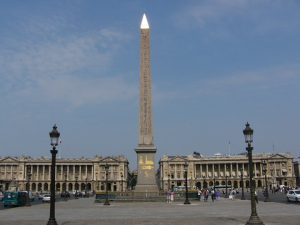
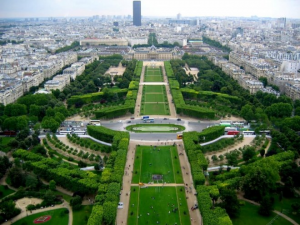
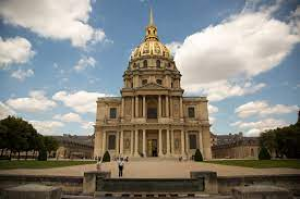

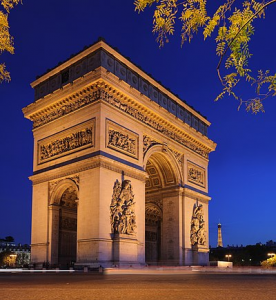
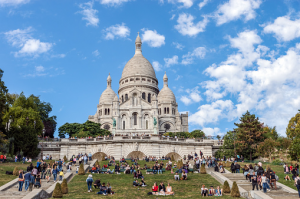
Değerlendirmeler